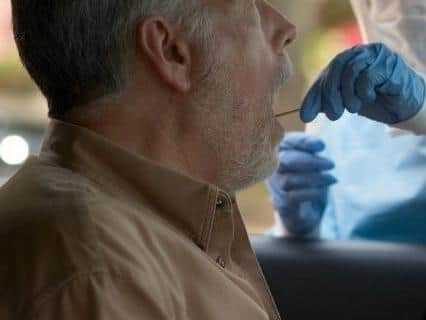Council report points out 5 areas with highest coronavirus death rates in Luton
and live on Freeview channel 276
At its last meeting, members of the borough council's health and social care review group were given an update on the impact of the pandemic on Luton's population.
“Local authorities are now required to develop local outbreak control plans to support the national test, trace, contain and enable approach,” said the report.
Advertisement
Hide AdAdvertisement
Hide Ad“This places a responsibility on councils to work with the local system and the community to develop proposals to prevent outbreaks and to work with Public Health England to manage outbreaks when they occur.


“A system for local outbreak management, supported by contact tracing and data intelligence, is in development.
“The borough council has received £1.4m to support this activity.”
The council’s public health team has hosted a weekly briefing for community and faith groups, developed localised advice guides and provided expert health protection advice to community facilities, including schools.
Advertisement
Hide AdAdvertisement
Hide Ad“Death rates are highest in Biscot ward, followed by Icknield, Barnfield, High Town and Challney,” added the report.
In a separate part of the meeting, councillors were told that a second Covid-19 outbreak in Bedfordshire might not be as steep as the first one because of improved knowledge about the virus.
David Carter, chief executive at Bedfordshire Hospitals Foundation Trust, said that drug therapies and non-invasive ventilation are two effective ways of combating some of the the worst aspects of coronavirus.
But as hospital patient numbers return to normal, he warned that finding enough hospital beds could become a problem.
Advertisement
Hide AdAdvertisement
Hide AdThe initial demand for hospital beds was offset by a reduction in road accident victims, sports injuries and strokes.
The volume of stroke patients eased as residents weren’t circulating and picking up respiratory conditions, or were under less stress through not being at work, the meeting was told.
The council’s corporate director public health, commissioning and procurement Gerry Taylor said a plan was published at the end of June about how to "contain the virus going forward”.
He said: “It picks up the test and trace system, where people who test positive for coronavirus are followed up through contact tracing.
Advertisement
Hide AdAdvertisement
Hide Ad“It also looks at preventing outbreaks and what we do if there is one to prevent further spread and contain it.
“The focus in Luton is very much around trying to work with our communities to avoid the need to bring in further lockdowns or restrictions.
“There are also concerns around the impaLuct on individuals of having to stay at home.
“That may be around social isolation, or an increase in domestic abuse or concerns about mental health.
Advertisement
Hide AdAdvertisement
Hide Ad“We do contact tracing if there is a complex issue in the town, such as an outbreak in one of our schools, businesses or care homes.”
Up to now, 280 people with coronavirus have died at Luton & Dunstable Hospital over the course of the pandemic.
Labour Limbury councillor Rob Roche said: “There are other high streets in Luton which are far busier than the town centre.
“You just don’t see the same control of people. They’re closer together.
Advertisement
Hide AdAdvertisement
Hide Ad“Perhaps we should be looking outside the town centre in some really busy high streets and help the communities with the same controls.”
Labour South councillor David Agbley, who chairs the review group, said: “This is a matter of life and death situation.
“The communications message should be stronger. You either live or die.
“There are no vaccines. If we don’t continue to take this seriously many people are going to die.”